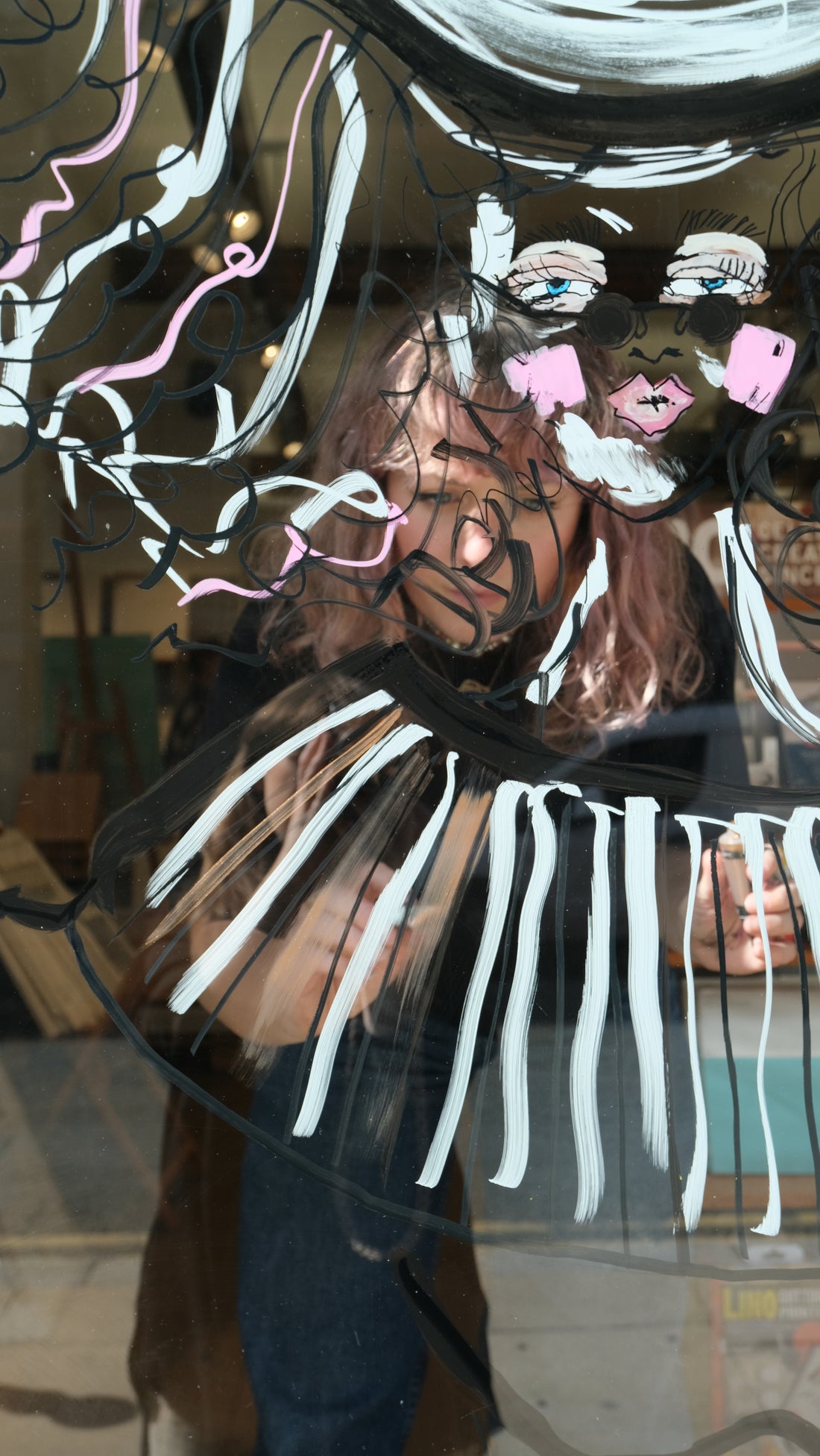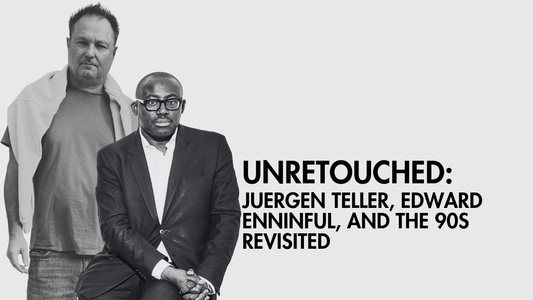
Live Liberation with Elyse Blackshaw
Share
Elyse shares her journey from early childhood, where she learned creativity through play, to her formal education in image-making, which cultivated a lifelong love of creating.
How has your formal or informal education shaped your artistic style and approach to creating?
From an early age, I was encouraged to experiment with drawing and creating. Growing up, I had the unique opportunity to explore various materials, thanks to my best friend’s parents who worked in the creative industries. Weekends and summer holidays were spent in their studios in Manchester, fostering a playful and fearless approach to art. This foundation cultivated a lifelong love for the process of creation over the outcome. During my BA in Embroidery at the Manchester School of Art, my focus shifted towards fashion illustration through a second-year project on fashion image-making. This ignited my enjoyment for visualising textiles and design ideas. Moving to London further expanded my horizons, as attending fashion life drawing sessions with Sketch Sesh and Art Model Collective pushed me to capture movement and atmospheres dynamically. My MA at the Royal College of Art deepened this exploration, refining my unique approach to image-making across various contexts and surfaces.

Were there any pivotal moments during your education that significantly changed the way you view or create art?
A pivotal moment during my BA was the introduction to fashion drawing. Experimenting with collage and abstract image-making transformed my perspective on fashion illustration. I realised it wasn't just about accurately rendering garments, but expressing my personality, energy, and emotional response to fashion. This shift allowed me to adopt a bold, dynamic, and vibrant style, infusing my work with life and liberation.

How do you balance the techniques you've learned in your education with your personal creative instincts?
Although I never formally studied illustration or fashion, my personal instincts have always guided my drawing style. Education honed these instincts, encouraging me to embrace abstraction, experiment with scale, and push boundaries. I often exaggerate elements like elongated arms or bold strokes to convey fluidity and mood. Balancing technical skills with intuition is key, trusting creative impulses while grounding them in the fundamentals of drawing. For me, it's about being transported by the feeling and movement of drawing to where instinct takes over.
Can you describe a piece of art, from another artist or a different era, that was influential in your early creative development?
The work of French-American interdisciplinary artist Niki de Saint Phalle, prevalent from the 1960s to the 1990s, was extremely influential in my early creative development. Her colourful hand-drawn illustrations, vibrant array of colours, and fluid lines, combined with personal memoirs, captivated me. Visiting her sculpture garden "Giardino dei Tarocchi" (Tarot Garden) in Tuscany in 2012 deeply inspired me. Observational mark-making inspired by her mosaic work helped me to develop a new visual language, elements of which still appear in my work today.
What inspired you to illustrate fashion?
My obsession with Barbie undeniably influenced my interest in fashion. Playing with Barbies was akin to creating fashion illustrations; styling their looks and creating narratives felt very connected to my artistic process. After visualising my embroidery and print samples during my BA, I continued to create illustrations post-graduation. A magazine noticed my work, leading to an opportunity to document London Fashion Week for their social and digital media. Since then, I've been dedicated to fashion illustration.

Describe the ways that you work as a professional and the mediums that you use.
As a fashion illustrator and live event illustrator, I work across various contexts. For live events, I use mixed media, including Posca PC-17k rectangular tip in white, Winsor & Newton Pro Markers, fine liners, and chalk pastels to create personalised portraits and gifts. For event and retail spaces, I adapt my medium to the scale, using materials like Liquitex Acrylic Gouache or digitally printed vinyl, depending on the project. Collaborating with designers and brands, the medium varies based on the desired outcome.

How do you keep your art fresh and relevant to the industry today?
Through regular studio practise my work is ever evolving and growing. The industry today is multimedia and spans across such a huge range of contexts. I try to keep the surfaces I draw on diverse, exploring how to apply my illustrations to new outcomes. The only way to keep fresh and relevant is to keep looking and observing. With digital and virtual realities increasing everyday, I'm excited to explore how to blend my analogue processes into a digital world. In addition to this, I think diversity and inclusion should be at the heart of the industry today, ensuring to depict and represent a broad range of people. This is something I am still working on improving and believe it is absolutely essential to keep the industry moving forward.
What recent commissions have you worked on that you really enjoyed creating, and why?
I recently worked on painting a window for Cass Art, a dual celebration of 40 years of Cass Art and London Fashion Week. It was exciting to paint a fashion illustration at such a large scale and live for passersby to watch the process. Painting on a window is wonderful and gives such a satisfying feeling as the paint effortlessly glides on the glass.

How have you used technology and social media to boost your practice?
Social media has been invaluable for sharing my work, processes, and commissions with a diverse audience. It has connected me with other artists, fostering a community of colourful creatives, and has been crucial for new clients to discover my unique services.
How can we see more of your work?
For live updates and processes, follow me on Instagram @elyseblackshaw. For creative services and unique artwork for sale, visit elyseblackshaw.com. Behind-the-scenes updates are available at elyseblackshaw.com/blog



